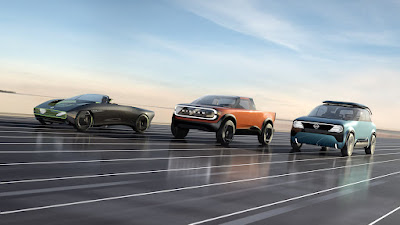The most obvious sign that Nissan’s R&D department lack of creativity and emotion is found in their decision to create the R32 EV for the Tokyo Auto Salon (read or watch the video at the bottom).
On the surface, the project seems mundane; since there are countless other classic cars that have received an EV powerplant transplant. However, Nissan said that this was born out of passion by a small group of Nissan engineers in Japan and that makes it worrisome.
It starts with the head of the R32 EV project itself—Nissan EV powertrain engineer Ryozo Hiraku. Hiraku-san says he’s a fan of the R32 GT-R and a former R32 Skyline owner himself, so it begs the question: why did he greenlight this darn thing in the first place? If one were a true enthusiast of a particular make and model, they’d understand its place in automotive history and lore, and why it should be kept as is. It’s even more worrying that he himself leveraged to have the R32 GT-R be the donor car. Of course, if it was his intention to rile up the fanbase, job done.
Next up, Nissan says this project was supposed to “support the development of future EVs.” As everyone knows, it’s easy to make crazy horsepower and torque with electric motors, but you want to know what Nissan did? They simply benchmarked a 36-year-old car—performance-wise. Combing through the details, that RB26DETT inline-6 got ripped out (RIP) for a pair of electric motors that makes 218 horsepower (160 kW) and 340 Nm of torque each. The company didn’t say so, but spec-wise, it sounds like the same AM67 electric motors from the Ariya Nismo. With that, its combined output should be around 435 horsepower and 600 Nm. Basing things solely on 0 to 100 times, that’s possible since the R32 GT-R and Ariya Nismo both do it in around 4.9 seconds. Impressive, but not great.
Of course, Hiraku-san and his team knows that EVs tend to drive dully so they took inspiration from the Hyundai Ioniq 5 N and its simulated gear shifting. Though the R32 EV does have a clutch pedal and a gear stick, all the sensations, including the jolts and shift shocks are fake. Talk about innovation that excites, huh? And of course, it makes fake RB26DETT engine sounds too, piped into the cabin speakers like a haunting of the ghost of Christmas past.
So, are there things that Nissan got right? Plenty, actually. For starters they got it right to keep the R32 EV looking as stock as possible. No wild body kits or whatever; it managed to pass for a newly-restored R32 GT-R down to its Gun Gray Metallic paint work. Although it sports larger (18-inch) wheels, the design closely resembles the original’s 16-inch rolling stock. The increased wheel size is necessary as it sports larger brake rotors and calipers sourced from the R35 GT-R. At each corner, there’s the Nismo sports suspension kit with Öhlins dampers too.
Inside, there was just as much consideration to keep things as original as possible while still upgrading some stuff for an enhanced driving experience. For example, there’s the custom Recaro sport seats as well as the double DIN audio gauges. The meter cluster was also changed to a high-resolution digital screen while keeping the original R32 GT-R’s overall look and profile.
While it has made its debut at the Tokyo Auto Salon, Nissan said work on the R32 EV doesn’t stop there. The team will continue to tune the twin electric motors to help it deliver the legendary ATTESA E-TS all-wheel drive system’s impressive all-weather traction and stability. Here is hoping that know-how from this rather contrived project would end up in something like an all-new GT-R. Although as early as now, they have confirmed that there are no plans to commercialize the R32 EV, or offer a conversion kit. Thank goodness.















Honestly, only few people would ever find love with the Skyline GT-R and its eponymous successor over something that pretends to be relevant in the automotive community.
ReplyDelete